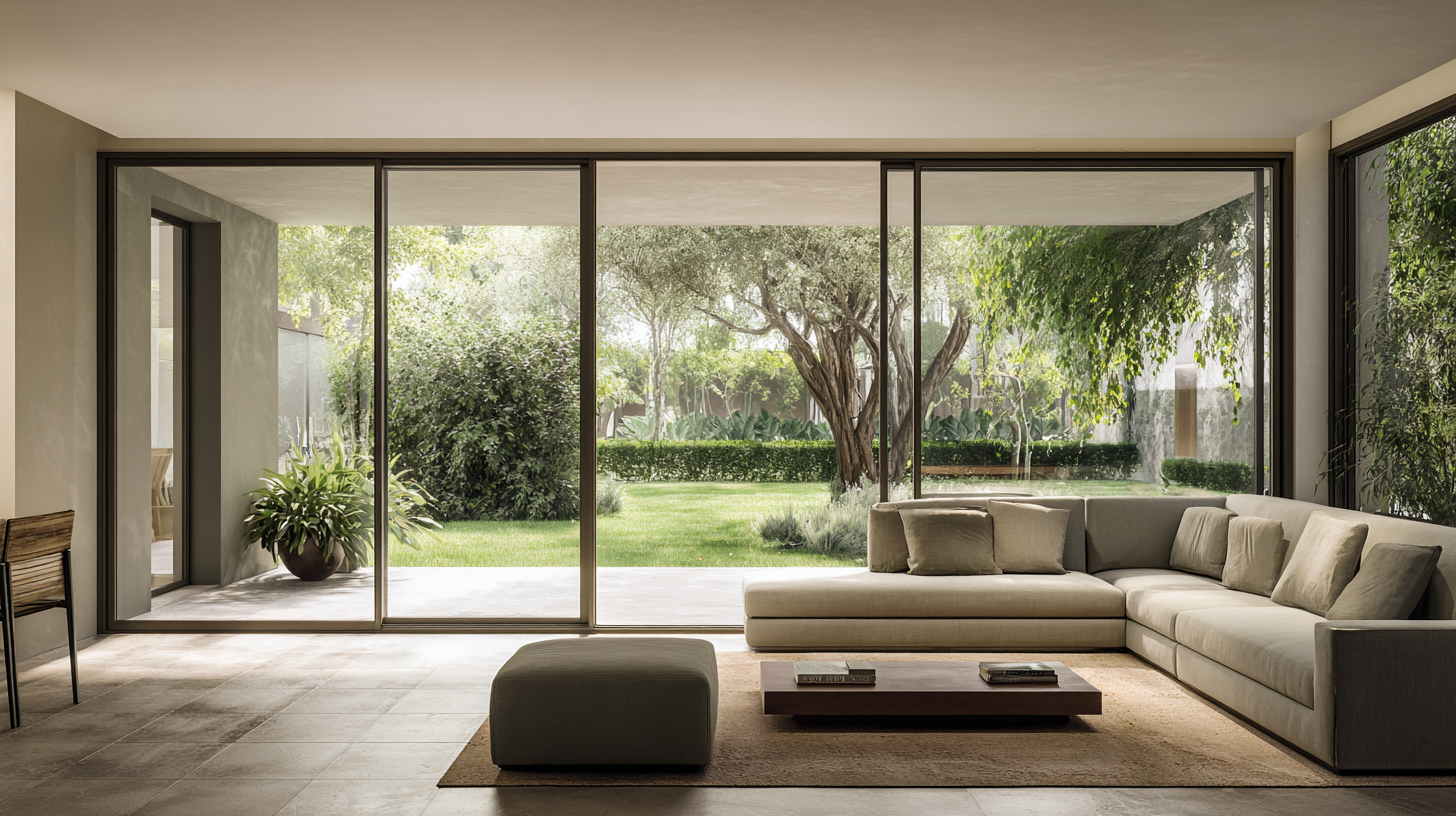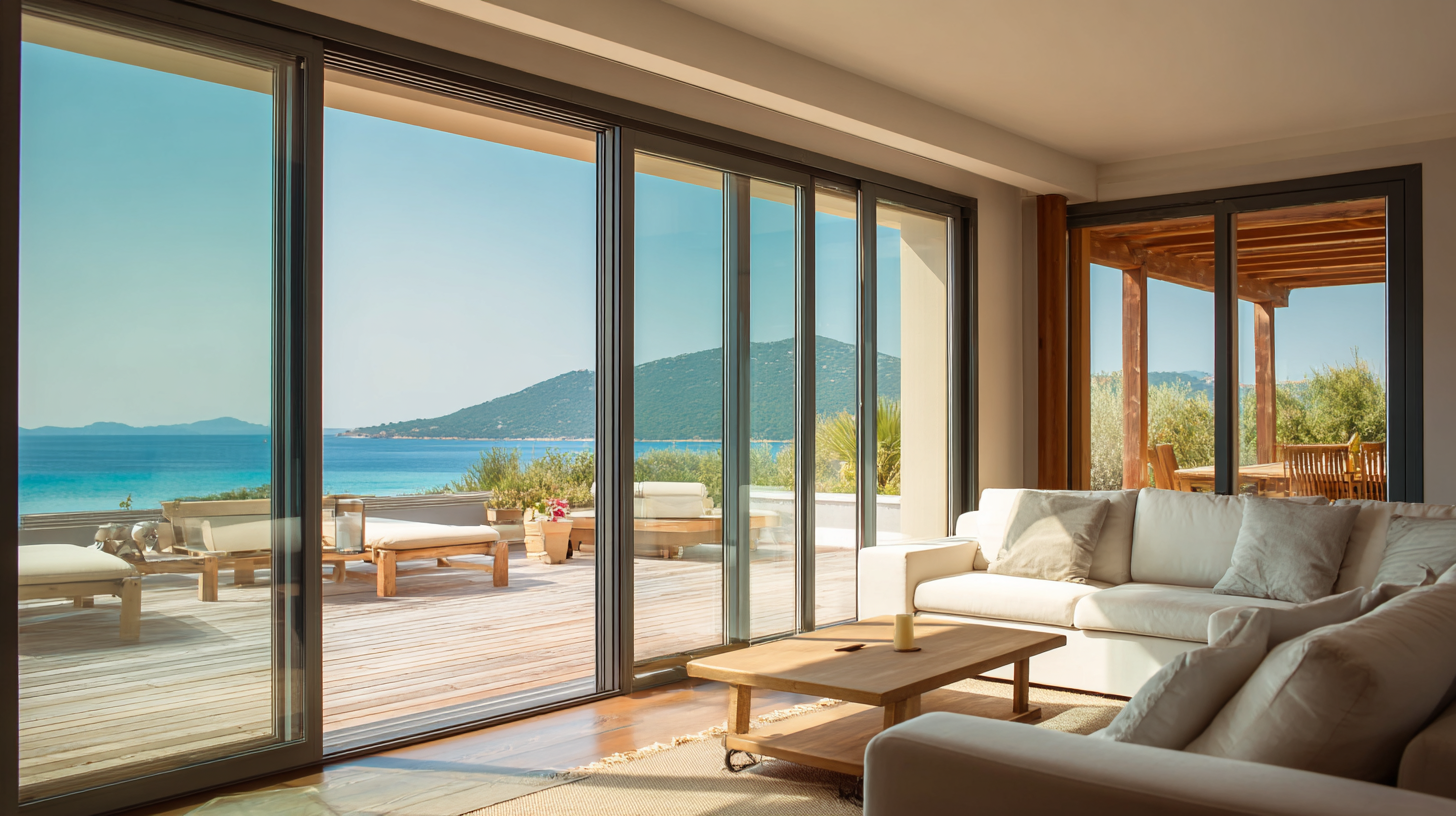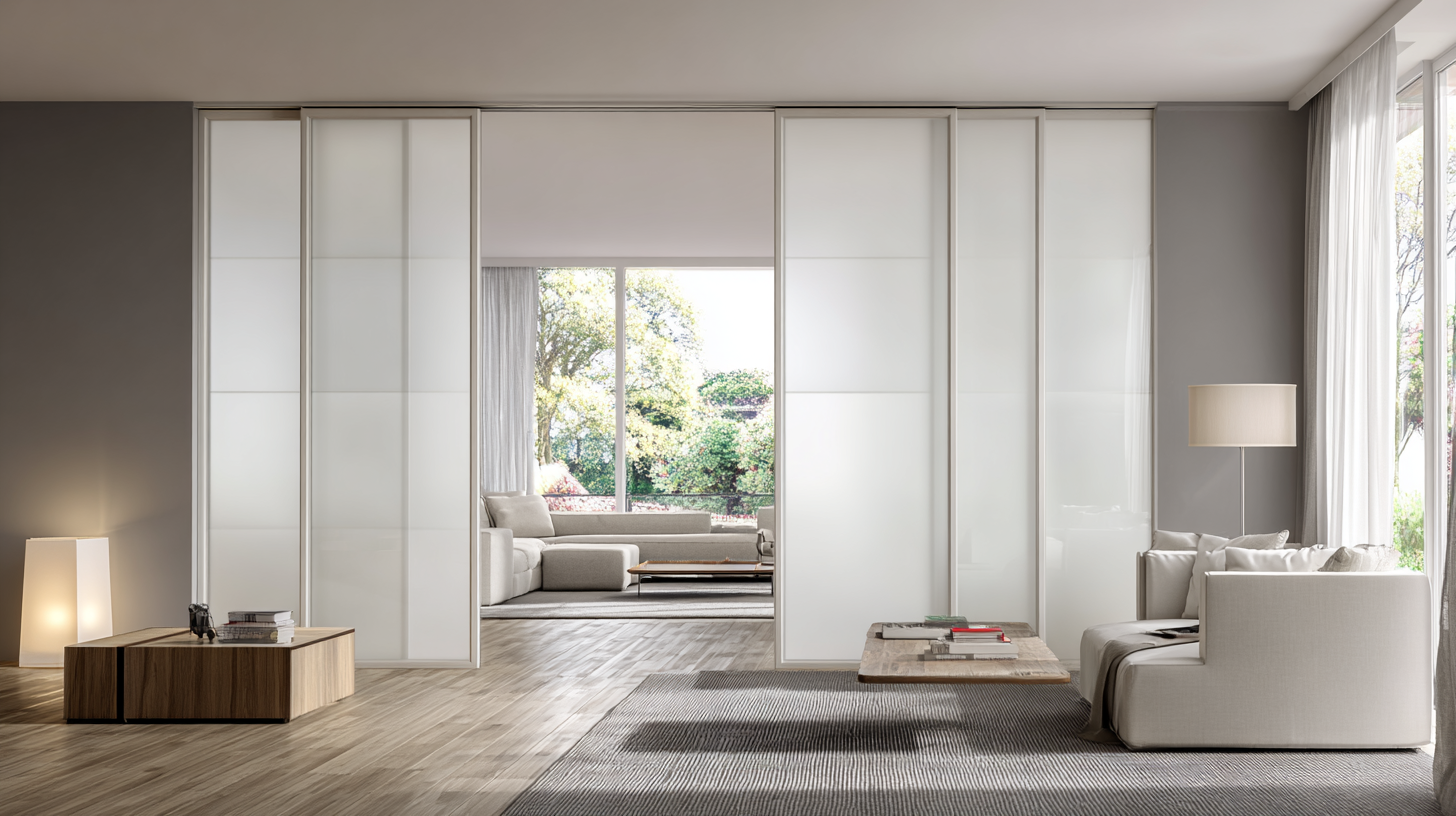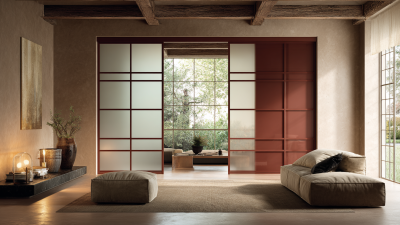How to Choose the Perfect Sliding Doors for Your Home
When selecting sliding doors for your home, it’s essential to consider both aesthetics and functionality, as these features significantly impact your living space. According to a recent report by the National Association of Home Builders, nearly 70% of homeowners consider sliding doors a vital feature for enhancing natural light and achieving seamless indoor-outdoor transitions. Furthermore, the global sliding doors market is projected to reach $36 billion by 2026, reflecting the rising demand for stylish yet practical home solutions. The right sliding doors can not only improve the aesthetic appeal of your home but also enhance energy efficiency and maximize space. With various materials, styles, and technical innovations available, making an informed decision is crucial to ensure that your choice aligns with your home’s design and functional requirements.

Table of Contents
[Hide]
Understanding Different Types of Sliding Doors: Materials and Styles
When selecting sliding doors for your home, understanding the different materials and styles available is crucial. Sliding doors can be crafted from various materials, including wood, aluminum, fiberglass, and vinyl. Each material offers its own unique benefits: wood provides a classic, warm aesthetic but requires regular maintenance; aluminum is lightweight and durable, perfect for modern designs; fiberglass is energy-efficient and resistant to warping; while vinyl is cost-effective and low-maintenance, making it a popular choice for many homeowners.

In addition to materials, sliding doors come in a range of styles, from traditional double-panel designs to sleek contemporary variations. French sliding doors feature elegant grids and are perfect for adding a touch of sophistication, while minimalist designs emphasize clean lines and expansive glass surfaces to maximize natural light. Consider the architectural style of your home and the desired functionality when choosing the style of your sliding doors, as the right combination will enhance both the aesthetic and practical aspects of your space.
Key Factors to Consider When Measuring for Sliding Doors
When measuring for sliding doors, accuracy is essential to ensure a seamless fit in your home. Start by measuring the width of the opening where the doors will be installed, accounting for any framing or trim that might affect the door size. It’s important to take multiple measurements at different heights to confirm that the opening is level and square. This step helps prevent complications during installation.
Next, consider the height of the opening. Standard sliding doors typically range from 80 to 96 inches in height, but custom sizes are available to suit your needs. Additionally, ensure that you have enough vertical clearance above the opening for the track system, which is essential for smooth operation. Finally, don’t forget to measure the space adjacent to the opening. This area will need to be cleared for the door panels to slide open without obstruction, so take note of any furniture or structural elements that may limit the door's movement.

Designing Your Space: Aesthetic and Functional Aspects of Sliding Doors
When considering sliding doors for your home, it's essential to balance aesthetic appeal with functional attributes. Sliding doors come in various styles, materials, and finishes, allowing homeowners to select options that complement their existing décor. For a modern space, sleek glass doors can create a seamless flow between indoor and outdoor areas, enhancing natural light. In contrast, wooden sliding doors can add warmth and a rustic touch, making them a perfect fit for traditional or farmhouse-style homes. The choice of hardware also plays a significant role; minimalist or ornate handles can significantly impact the overall appearance.
Functionality is equally important in your selection process. Sliding doors can save space where traditional doors might swing open and require more room. They are also an excellent option for creating versatile living areas, such as home offices or playrooms, which can be separated or connected as needed. Additionally, consider insulation and durability; energy-efficient sliding doors can reduce heating and cooling costs, while high-quality materials ensure longevity. By thoughtfully considering both design and practicality, you can choose sliding doors that enrich your living space while meeting your everyday needs.
How to Choose the Perfect Sliding Doors for Your Home - Designing Your Space: Aesthetic and Functional Aspects of Sliding Doors
| Feature | Description | Material Options | Aesthetic Appeal | Functional Benefits |
|---|---|---|---|---|
| Space Saving | Ideal for small areas where traditional doors may not fit. | Aluminum, Wood, Vinyl | Sleek, modern look that enhances open space. | Allows for seamless indoor-outdoor flow. |
| Light Transmission | Large glass panels let in natural light. | Tempered Glass, Frosted Glass | Brightens interior spaces. | Reduces reliance on artificial lighting. |
| Energy Efficiency | Double or triple-glazed options available. | Composite, Wood with Weather Stripping | Variety of finishes to match home decor. | Helps maintain indoor temperatures. |
| Security Features | Multi-point locking systems for enhanced security. | Reinforced Glass, Strong Frames | Stylish options that deter break-ins. | Gives peace of mind while enhancing entry points. |
| Accessibility | Easy to open and close for people of all ages. | Aluminum for lightweight options | Available in various colors and styles. | Fits homes requiring ADA compliance. |
Choosing the Right Hardware and Accessories for Sliding Doors
When selecting sliding doors for your home, choosing the right hardware and accessories is crucial for both functionality and aesthetics. The hardware includes the tracks, rollers, and handles that will determine how smoothly your doors operate. It’s advisable to opt for high-quality materials that resist wear and tear, ensuring longevity and reliability.
**Tips:** Always check the weight capacity of the tracks and rollers before making a purchase. Heavier doors require sturdier support systems to function effectively. Consider finishes that complement your interior style; brushed nickel or matte black may align perfectly with modern designs, while antique brass suits more traditional décors.
Accessories like locks and handles also play a significant role in the overall look and security of sliding doors. A stylish handle can enhance the door’s visual appeal, while a reliable locking mechanism is essential for safety.
**Tips:** Look for handles that are easy to grip, especially for larger doors. For enhanced security, opt for multi-point locking systems, which provide greater resistance against forced entry. Customizing your sliding doors with the right hardware can elevate your space while ensuring practicality and safety.
Choosing the Right Hardware and Accessories for Sliding Doors
Maintenance Tips for Ensuring Longevity of Your Sliding Doors
When it comes to maintaining sliding doors, a focus on routine care can significantly extend their lifespan. According to the Amercian Architectural Manufacturers Association (AAMA), regular maintenance can enhance a door's durability by up to 40%. This emphasizes the importance of routine checks and servicing to ensure that your sliding doors operate smoothly for years to come. Proper care includes cleaning tracks and rollers to prevent debris buildup, which can lead to malfunctions. A mixture of mild soap and water is typically recommended to keep these components free of dirt and grime.
 Additionally, lubrication plays a crucial role in maintenance. The International Door Association (IDA) suggests that homeowners should apply a silicone-based lubricant to the tracks and rollers every six months to maintain optimal functionality. This helps reduce friction and wear, leading to easier operation and preventing potential costly repairs. Temperature changes can also affect the operation of sliding doors; therefore, it’s advisable to inspect weather stripping and seals regularly to avoid air leakage and ensure energy efficiency. Regular maintenance not only enhances the aesthetic appeal but significantly improves the performance and longevity of your sliding doors.
Additionally, lubrication plays a crucial role in maintenance. The International Door Association (IDA) suggests that homeowners should apply a silicone-based lubricant to the tracks and rollers every six months to maintain optimal functionality. This helps reduce friction and wear, leading to easier operation and preventing potential costly repairs. Temperature changes can also affect the operation of sliding doors; therefore, it’s advisable to inspect weather stripping and seals regularly to avoid air leakage and ensure energy efficiency. Regular maintenance not only enhances the aesthetic appeal but significantly improves the performance and longevity of your sliding doors.
Related Posts
-

7 Best Sliding Doors for Modern Homes That Elevate Your Space
-

Navigating Challenges with Sourcing French Windows for Global Buyers
-

What is the Future of Door Hardware in a Globalized Marketplace
-

5 Essential Tips for Choosing the Perfect French Windows for Your Home
-

The Ultimate Guide to Choosing the Perfect Home Doors for Every Style and Budget
-

Innovative Examples of Interior Doors Transforming Modern Spaces with Industry Insights